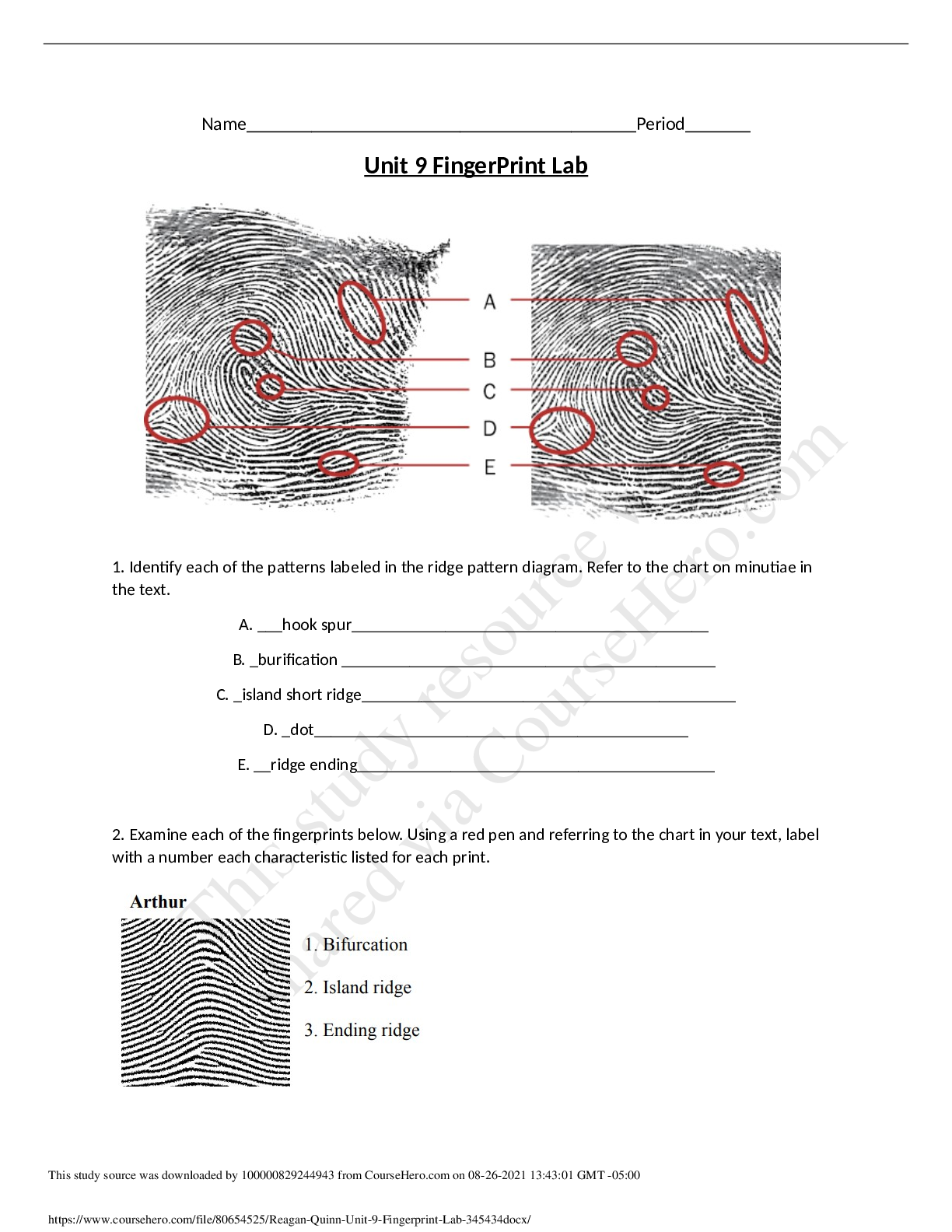Biology > Lab Report > environmental Bio. succession lab report (All)
environmental Bio. succession lab report
Document Content and Description Below
Succession I. Introduction Ecosystem succession, also called "ecological succession," is the process through which a natural community of plants and animals changes after a disturbance. It is gener... ally understood that ecological succession is a progressive movement towards the most stable community (also called a "climax community"). It involves the processes of colonization, establishment, and extinction which act on the participating plant species. Most successions contain a number of stages that can be recognized by the collection of species that dominate at that point in the succession. Succession begins when an area is made partially or completely devoid of vegetation because of a disturbance. Some common mechanisms of disturbance are fires, wind storms, volcanic eruptions, logging, climate change, severe flooding, disease, and pest infestation. Succession stops when species composition changes no longer occur with time, and this community is said to be a climax community (W2). The concept of a climax community assumes that the plants colonizing and establishing themselves in a given region can achieve stable equilibrium. The idea that succession ends in the development of a climax community has had a long history in the fields of biogeography and ecology. One of the earliest proponents of this idea was Frederic Clements who studied succession at the beginning of the 20th century. However, beginning in the 1920s scientists began refuting the notion of a climax state. By 1950, many scientists began viewing succession as a phenomenon that rarely attains equilibrium. The reason why equilibrium is not reached is related to the nature of disturbance. Disturbance acts on communities at a variety of spatial and temporal scales. Further, the effect of disturbance is not always 100 percent. Many disturbances remove only a part of the previous plant community. As a result of these new ideas, plant communities are now generally seen as being composed of numerous patches of various size at different stages of successional development. This kind of succession is the manner through which natural communities respond to disturbances and changes. The three main types of ecological succession are primary, secondary and cyclical succession (W2). II. Discussion Primary Succession [Show More]
Last updated: 2 years ago
Preview 1 out of 4 pages
.png)
Buy this document to get the full access instantly
Instant Download Access after purchase
Buy NowInstant download
We Accept:

Reviews( 0 )
$8.00
Can't find what you want? Try our AI powered Search
Document information
Connected school, study & course
About the document
Uploaded On
Jul 04, 2021
Number of pages
4
Written in
Additional information
This document has been written for:
Uploaded
Jul 04, 2021
Downloads
0
Views
63














